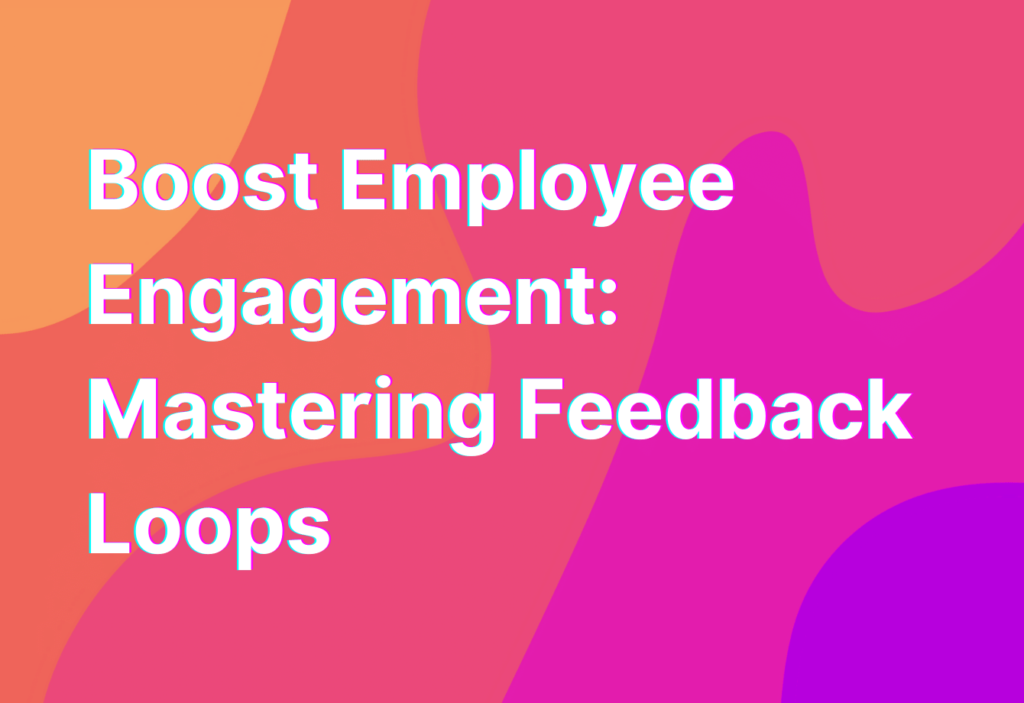Boost Employee Engagement: Mastering Feedback Loops
Hey there, remote work enthusiasts! It’s Ashley here, your go-to gal for all things remote work. Today, I want to talk about a crucial aspect of remote work that often gets overlooked: feedback loops. These loops are essential for boosting employee engagement and creating a thriving remote work culture. So, let’s dive in and explore how you can master feedback loops to keep your remote team motivated and connected.
What are Feedback Loops?
Before we get into the nitty-gritty, let’s start with the basics. Feedback loops are a continuous process of giving and receiving feedback within a team or organization. They are essential for fostering open communication, improving performance, and enhancing employee engagement.
Feedback loops can take various forms, such as one-on-one meetings, team retrospectives, performance reviews, or even casual check-ins. The key is to create a culture where feedback flows freely and is seen as a valuable tool for growth and development.
The Benefits of Feedback Loops
Now that we know what feedback loops are, let’s explore why they are so important for remote teams. Here are some key benefits:
- Improved Performance: Regular feedback helps employees understand their strengths and areas for improvement, leading to enhanced performance.
- Increased Engagement: When employees feel heard and valued, they are more engaged and motivated to contribute their best work.
- Enhanced Collaboration: Feedback loops encourage collaboration and teamwork, as team members can openly share their thoughts and ideas.
- Personal Growth: Constructive feedback provides opportunities for personal and professional growth, helping employees reach their full potential.
- Stronger Relationships: Regular feedback builds trust and strengthens relationships within the team, fostering a positive work environment.
Mastering Feedback Loops
Now that we understand the importance of feedback loops, let’s dive into some practical tips for mastering them:
- Set Clear Expectations: Clearly communicate your expectations to your remote team members. This will help them understand what is expected of them and what areas they should focus on.
- Provide Timely Feedback: Don’t wait for formal performance reviews to provide feedback. Offer timely feedback, both positive and constructive, to keep the momentum going.
- Be Specific: When giving feedback, be specific about what went well and what could be improved. Vague feedback is not helpful and can lead to confusion.
- Encourage Self-Reflection: Encourage your team members to reflect on their own performance and identify areas for growth. This self-reflection can lead to valuable insights and personal development.
- Make Feedback a Two-Way Street: Feedback should not be a one-sided conversation. Encourage your team members to provide feedback to you and to each other. This creates a culture of open communication and continuous improvement.
By implementing these tips, you’ll be well on your way to mastering feedback loops and creating a thriving remote work culture.
Wrapping Up
Feedback loops are a powerful tool for boosting employee engagement in remote teams. By creating a culture of open communication and continuous feedback, you can enhance performance, foster collaboration, and create a positive work environment. So, don’t underestimate the power of feedback loops and start implementing them in your remote team today!
For more tips on boosting employee engagement in remote teams, check out our Hybrid Meetings article. It’s packed with valuable insights and strategies to keep your remote team connected and engaged. Happy reading!


